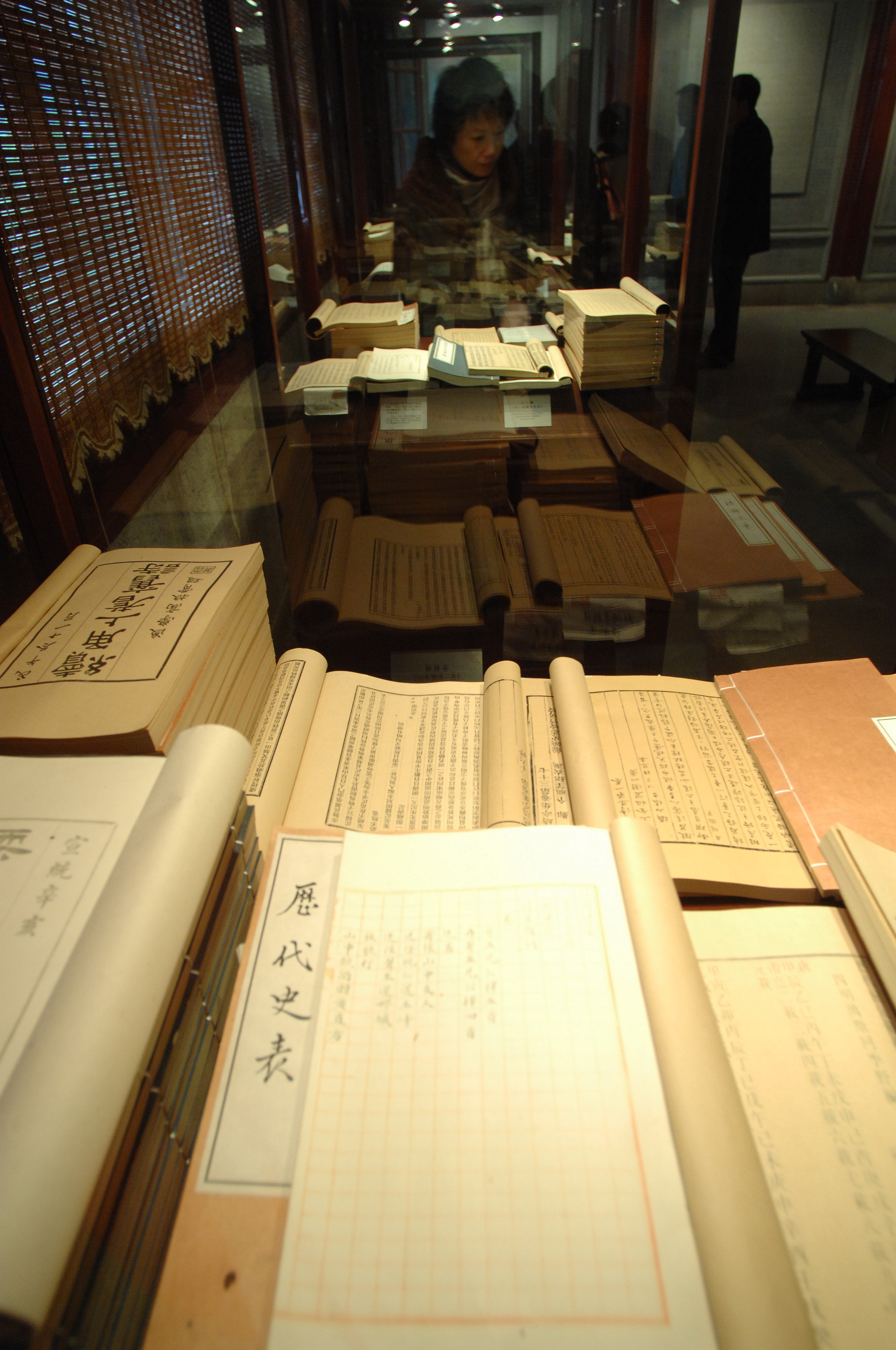Tianyige, located in the coastal city of Ningbo in China’s eastern Zhejiang province, is believed to be the country’s oldest surviving library. Within the next two years, it is expected to be listed as one of China’s top scenic spots by the National Tourism Administration.

The library, with a collection of about 300,000 ancient books, has also become a book-themed museum since 1994, hosting regular exhibitions of Chinese calligraphy and paintings.[Photo/China Daily]
You may want to visit it before it acquires the status and tourists descend on it.
While Tianyige has been renovated in recent years and may look newer than its age of more than400years, thick layers of moss on trees in the compound tell its story.
The library and family garden were built in 1561, by Fan Qin, a high-ranking official from the Ming Dynasty (1368-1644). Fan named it after Tianyi, or “universal union”, a concept that is closely related to water in Chinese philosophy.
Fan collected some 70,000 antique books during his lifetime, making it one of the largest private libraries at the time. The collection dates back to the 11th century, making it an important research base for studying the Ming dynasty. Many of the books are the only existing handwritten copies of the original texts and carry rare glimpses into history.
While many ancient private libraries had been ruined by fire, Tianyige stayed intact because Fan had taken care to design the building well. The library was separated from his living quarters by a small alley, and a pond was built in front of it.
Fan barred lighting fires and drinking alcohol on the library premises, a rule that was followed by 13 generations in his family.
Families that entered the library without a”proper reason” would be banished from the ancestral hall for years, which was about the worst disgrace at the time. The library was open only to male members of Fan’s family. After Fan died in 1585, his eldest son inherited it.
Huang Zongxi (1610-95), a famous historian, was the first person outside the Fan family to be allowed to enter the library, accompanied by Fan’s great-grandson. Throughout its history, the library had opened its gates to only eight people outside of the family, all of them among the greatest thinkers and artists of their time.
During the Qing Dynasty (1644-1911), Tianyige had acquired such an illustrious reputation that even Emperor Qianlong sent officials to learn how it was built and how the books were preserved. He modeled Wenyuan chamber in the Forbidden City and Wenjin chamber in the Chengde mountain resort after Tianyige.
During the First Opium War (1839-1842), however, Tianyige fell victim to the British army, which took away many valuable books, and later, book dealers and thieves took more. By the mid-20th century, it was left with fewer than 20,000 volumes.
After the founding of the People’s Republic of China in 1949, the library was renovated and received donations from various other libraries and collectors. Today, the collection is 300,000 volumes.
Damaged books are restored in a nearby antique book center. The restoration involves some 13 procedures. Among other things, the books are first numbered by pages, and then painstakingly cleaned with tweezers, brushes and sometimes paste. The broken pages are patched with ancient paper or handmade paper, followed by pressing and binding.
Most of the restored books are now available in digital form on www.tianyige.com.cn.
The library has also become a book-themed museum since 1994, hosting regular exhibitions of Chinese calligraphy and paintings.
Besides its collection of antique books, Tianyige also features a traditional garden, with wooden buildings, cobbled pathways, artificial hills and tranquil ponds set over an area of more than 31,000 square meters.
